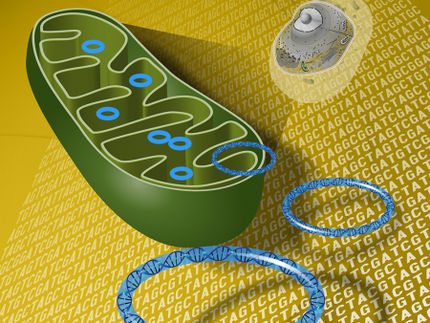Protein 'bar code' in spinal fluid could lead to first diagnostic test for Alzheimer's patients, Cornell researchers say
Imagine the ability to use a simple spinal tap to diagnose Alzheimer's in people living with the disease. With the power of proteomics - the study of the structure and function of proteins - that ability could be close at hand.
Kelvin Lee, Cornell associate professor of chemical and biomolecular engineering; Norman Relkin, clinical neurology associate professor at Weill Cornell Medical College; and researchers Erin Finehout, Ph.D., Zsofia Franck and Leila Choe have discovered that Alzheimer's is identifiable through a specific pattern of proteins, a "bar code," so to speak - found in cerebrospinal fluid, or CSF. Their findings, published in Annals of Neurology, are the culmination of research efforts involving both neurology and engineering on Cornell's two campuses that began in 1999.
The researchers discovered a panel of 23 proteins specific to the neurodegenerative disease when comparing CSF samples from a group of patients suffering from Alzheimer's, with samples from a control group of asymptomatic patients and patients with other forms of dementia. The discovery holds promise for developing a diagnostic test for Alzheimer's.
To start, Lee said, the research group called every brain bank and Alzheimer's research center in the country to solicit samples that met criteria for the disease, taken while the patients were still alive. They also needed proof that the patients, after they died, were later confirmed to have had the illness.
Their control group comprised healthy individuals who donated spinal fluid, as well as people who exhibited signs of dementia but were unlikely to be suffering from Alzheimer's. The composition of the control group was critical, according to Lee, so that the right comparisons could be made to the Alzheimer's samples. To separate and quantify the proteins, the scientists used gel electrophoresis, which allowed them to see the proteins as two-dimensional bar code patterns on a given sample. This led to analysis of how the bar code patterns changed in ways relevant to the disease. Using mass spectrometry, the researchers then analyzed the individual proteins to figure out what the underlying genes were.
Although identifying the presence of the 23 proteins was a huge step forward for diagnosing Alzheimer's, there is more work to be done before a spinal-tap procedure for diagnosis of the disease can become available for physicians in their offices, Lee said. Among the further studies needed is confirmation of these results using different sets of patients, he said.
Other news from the department science
Most read news
More news from our other portals
See the theme worlds for related content
Topic World Mass Spectrometry
Mass spectrometry enables us to detect and identify molecules and reveal their structure. Whether in chemistry, biochemistry or forensics - mass spectrometry opens up unexpected insights into the composition of our world. Immerse yourself in the fascinating world of mass spectrometry!

Topic World Mass Spectrometry
Mass spectrometry enables us to detect and identify molecules and reveal their structure. Whether in chemistry, biochemistry or forensics - mass spectrometry opens up unexpected insights into the composition of our world. Immerse yourself in the fascinating world of mass spectrometry!























































